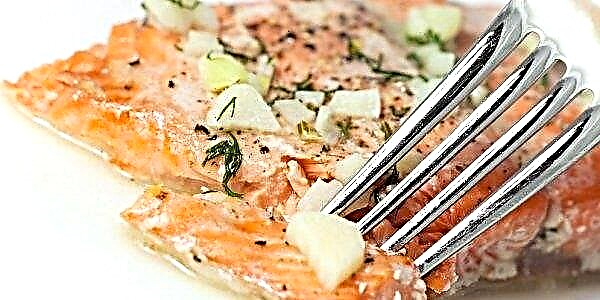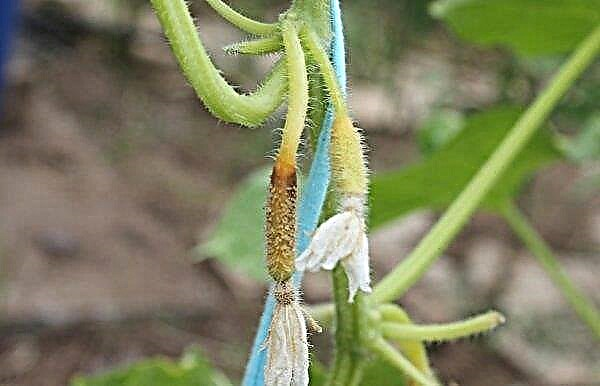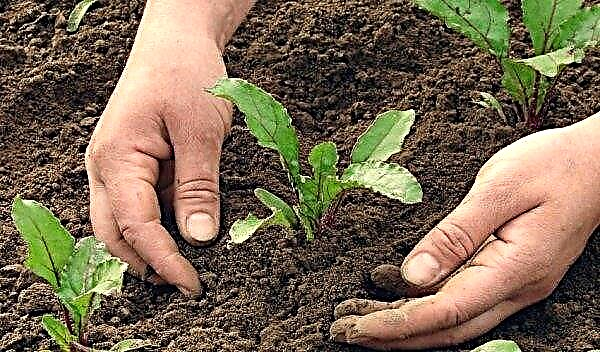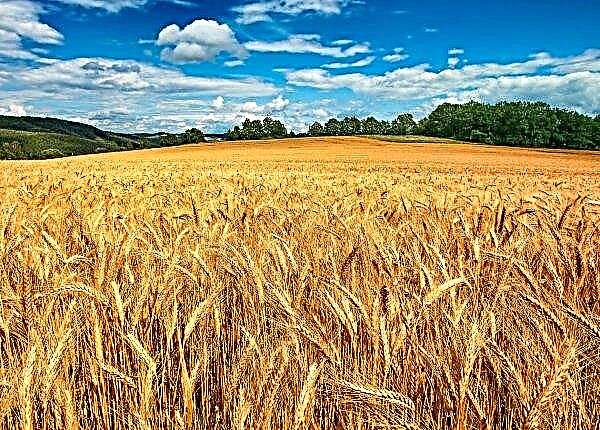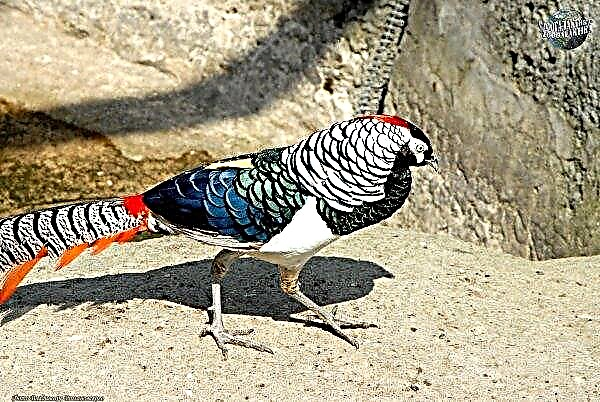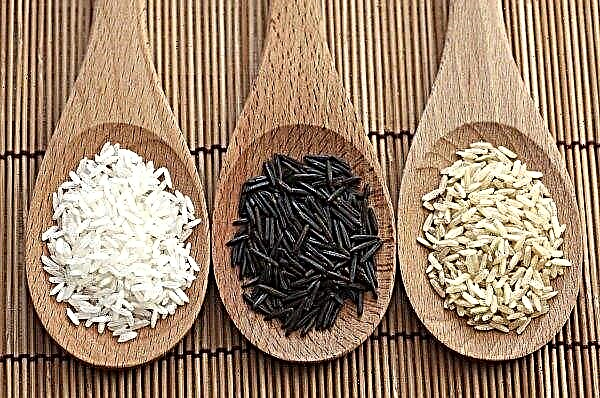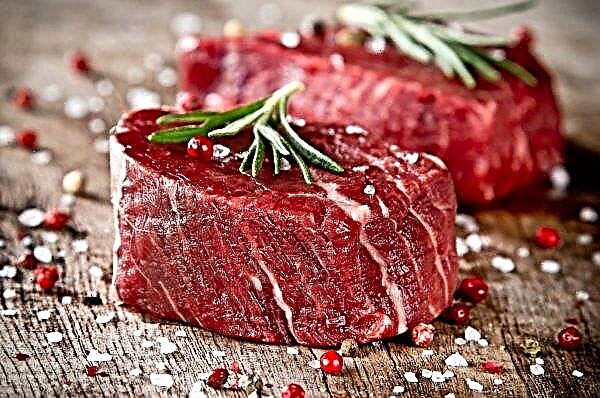A popular variety of juniper medium (or juniper Pfitzerian) King of Spring got its name due to the bright, rich color of the needles. The “middle” juniper was obtained at the end of the 19th century by German breeders, including Wilhelm Fitzer, who managed to cross Cossack and Chinese plant species. Today, this beautiful representative of conifers is a worthy decoration of many personal plots.
Botanical Description
Juniperus x pfitzeriana King of Spring is a low, wide bush, the crown of which has an asymmetrical shape. In late autumn, when the first real frosts begin, this coniferous plant becomes ocher-yellow, which is why it is a noticeable accent in the garden, where all the autumn colors have almost faded.
The key characteristics of this variety are:
- an adult plant rarely exceeds 50 cm in height (probably because of this particular feature it got its second name, “Juniperus x media”, which means “juniper medium”);
- the width of the bush can extend up to 1.5 m;
- needles - not spiny, dense, dense. Young needles are golden in color, and the first few months differ in color from old ones;
- the direction of growth of branches is up, with ends tending to the soil;
- grows and branches better in sunny areas, in the shadow of the needles it dims;
- takes root on any, even very poor, soil, but reacts especially well to loose, slightly acidic (preferably loamy or sandy loamy) soil;
- does not tolerate overflow;
- it is steady against adverse weather conditions - it is not afraid of either cold winds or frosts.
Landing
It is preferable that the landing site of King of Spring is sunny. Only in such conditions will all natural colors and shades incorporated in this variety be able to fully express themselves. There are no special requirements for soil composition. But before planting, the site needs to be drained to avoid stagnation of water and waterlogging of the roots.
Did you know? Some housewives use juniper branches to flavor juices, compotes, fruit drinks. The meat, which was prepared with the addition of the fruits of this plant, acquires an exotic taste and aroma, and pickles (for example, sauerkraut) become much richer, both in taste and in the number of useful properties.
As a drainage material, crushed brick or sand can be used. The hole in which the plant is planned to be planted should be two, or even three times in diameter, than the earthen lump of the plant.
If you want to create juniper medium optimal conditions for growth, prepare a non-acidic soil favorable to this variety. To do this, you need to combine and thoroughly mix the turf soil with peat and sand in a ratio of 1: 2: 1.
Important! When buying seedlings, carefully inspect them. They should be without obvious defects or damage, and also without signs of damage by any parasites or diseases. The needles should not have brown or dried fragments.
Before planting, it is recommended to immerse the bush in a solution that stimulates the formation and growth of the root system. For this, such well-known and affordable means as Getaroauxin, Kornevin are suitable. It is necessary to withstand the preparation in the solution until the earthen lump is evenly wet. In order for the plant to adapt faster after planting and begin to grow more intensively, you can treat the needles with stimulants such as Epin or Zircon.
When everything is ready for the landing of planting material, you can begin to work and follow a simple and understandable algorithm:
- At the bottom of the previously prepared landing pit, it is necessary to pour a layer of fertile soil.
- Make a hole that will be approximately the same size as the earthen ball of the seedling in the container.
- Place the juniper in the center of the pit, flatten the roots.
- Tamp the soil tightly so that there are no voids.
- The neck should not be deepened - it should be at ground level.
- The first 7 days after planting, a young bush must be watered daily.

Juniper Care
In fact, pfitzeriana is a completely unpretentious and non-whimsical plant; it does not require a special approach. In summer, during periods of drought, it is advisable to water. So that the needles do not suffer from sunburn, sprinkling should be done in the morning or in the evening, or when it is cloudy on the street.
Top dressing should be done once a year, in spring (end of April - May) with special fertilizing compounds for conifers.The soil in which young seedlings develop should be loosened from time to time.
Did you know? In Russia, dishes were made from juniper bark. Its uniqueness was that even in the hottest weather, milk in such containers did not turn sour.
Before winter, the soil around the shrub should be insulated with peat, pouring it with a layer of about 10 cm. Young and immature specimens must be protected from winter adverse natural manifestations by covering the shoots with burlap, spruce branches or special agrofibre. To prevent heavy snowfalls from damaging the crown, in autumn all branches are recommended to be tied to the trunk with a soft rope.
Periodically, it is necessary to carry out preventive and therapeutic treatment. Copper-containing preparations — HOM or Fufanon — are perfect for this. Insecticides "Aktara" and "Aktellik" will help protect against pests. Be sure to follow the description of the process of working with a particular drug.
Breeding methods
The most popular, simple and effective method of propagation of Juniperus x pfitzeriana King of Spring can be considered cuttings.
To do this is quite simple:
- cut the cuttings about 12 cm in size. For this, young shoots are better;
- clean cuttings from needles;
- place the planting material in a container with prepared soil personally or in the purchased substrate for conifers;
- build a small greenhouse. To do this, cover the container with a plastic bag. Every day you need to let the cuttings ventilate. This will help create a favorable microclimate.

The rooting process lasts approximately 2 months. After this time, young seedlings are transplanted into larger containers, where the juniper will grow for the next year or two. When the plants are fully strengthened, and their root system is fully formed, they can be planted in open ground.
Use in landscape design
Due to its unpretentiousness in care and excellent decorative characteristics, King of Spring has become incredibly popular both among landscape designers, professionals and amateur gardeners.
This plant is widely used for:
- creating stylish compact compositions on alpine slides or flower beds, as well as in rose gardens;
- registration of borders, lawns;
- creating hedges;
- for group landings;
- for decorating rocky gardens.

The appearance of the plant allows it to organically fit into almost any style. King of Spring will look great in a Japanese or Chinese garden, as well as in green compositions in the Art Nouveau style. Suitable for both single (solitaire) and group landing.
Juniper middle King of Spring is a real find for those who want to make their personal plot beautiful, bright, original. Fits perfectly into almost any landscape design. The plant has several advantages, including: excellent decorative indicators, absolute unpretentiousness in care, as well as a positive effect on air quality and human health.Important! Besides its decorative features, Juniperus x media is also very useful. All representatives of this species emit volatile, which copes with air purification and strengthens the immune system.

